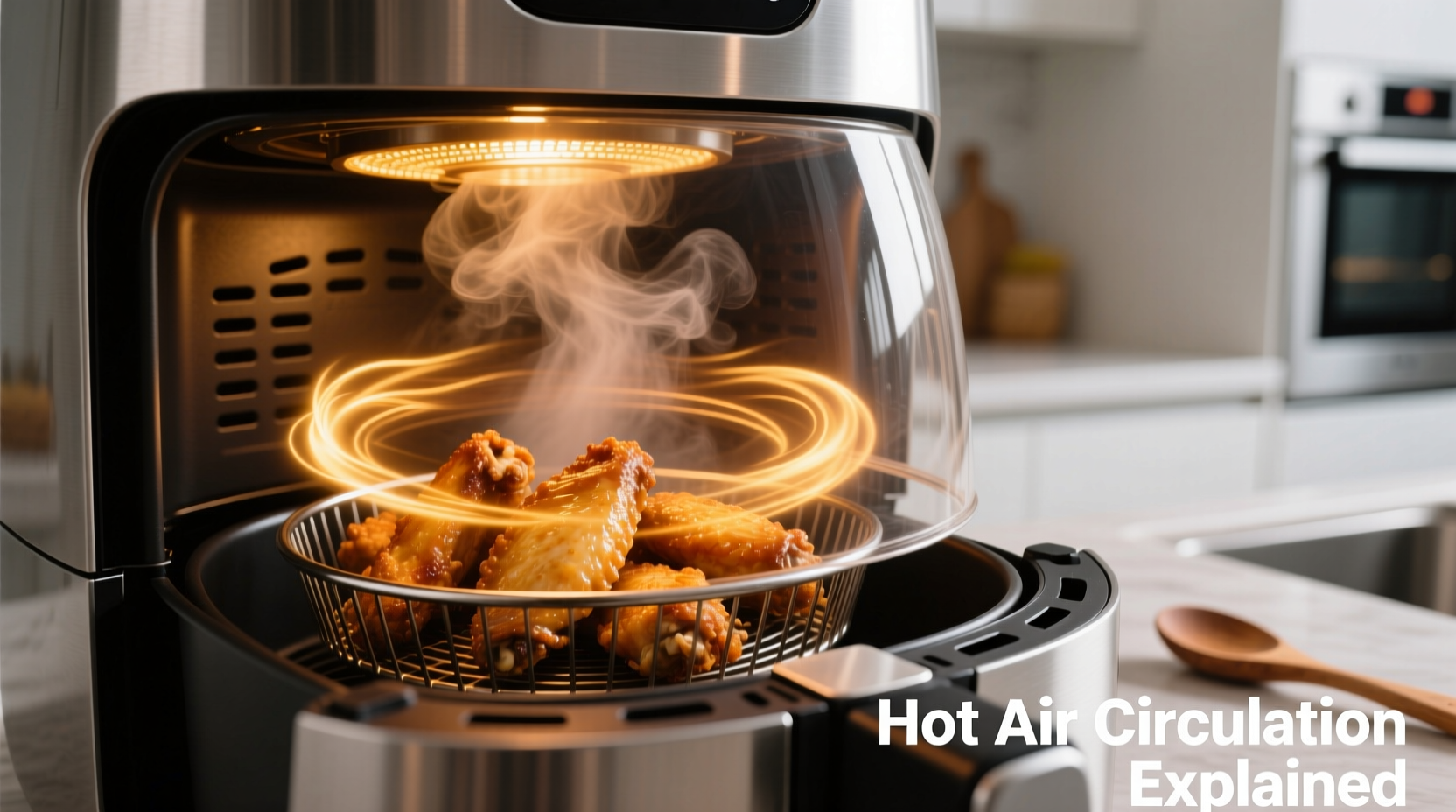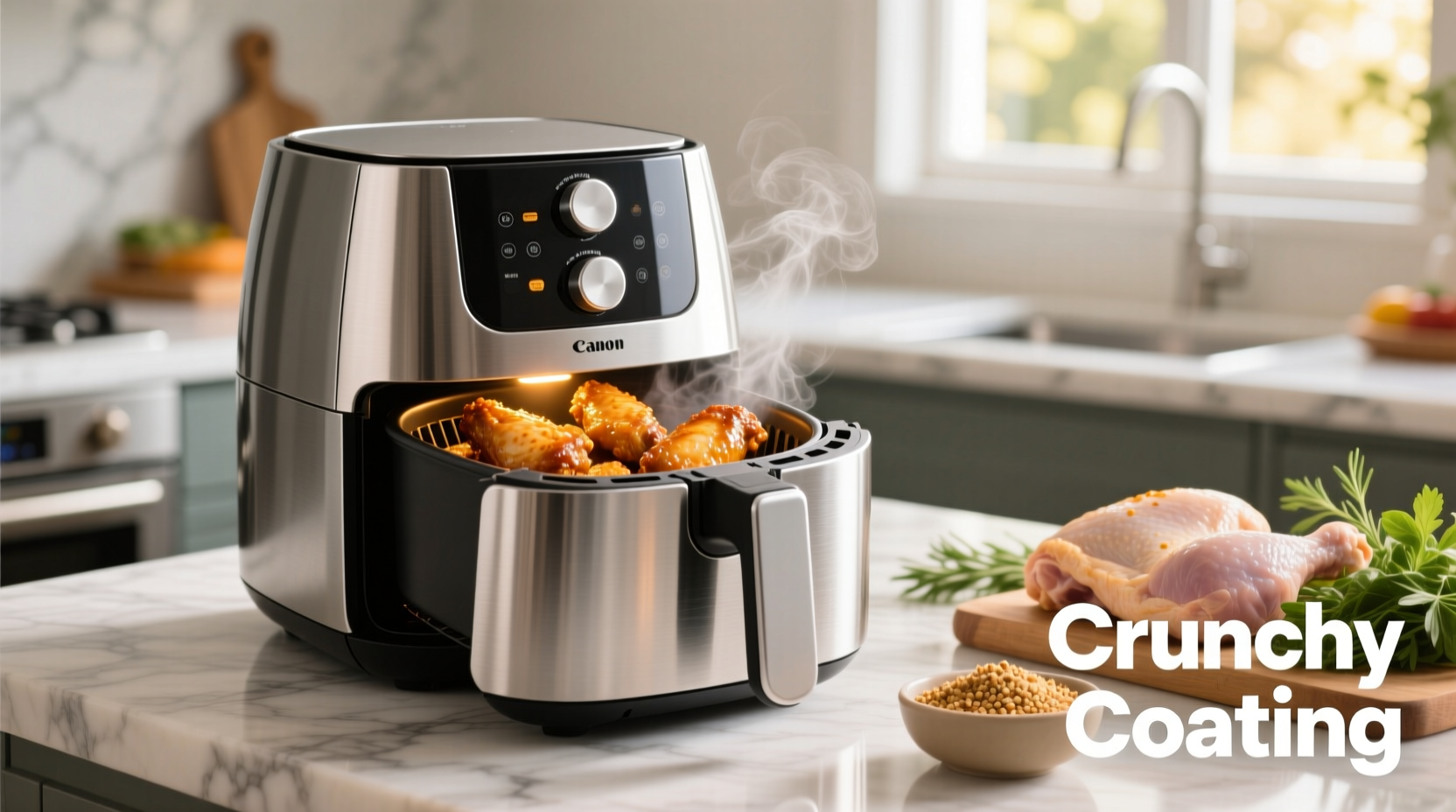Air fryer cooking uses rapid air technology to circulate superheated air around food, creating a crispy exterior with up to 85% less oil than traditional deep frying while maintaining similar texture and flavor. This innovative method combines convection baking principles with high-heat circulation for healthier, faster cooking results.
If you've ever wondered what is air fryer cooking and whether it lives up to the hype, you're not alone. Millions of home cooks have embraced this kitchen innovation, but many still don't understand the science behind those perfectly crispy french fries with dramatically less oil. Unlike traditional deep frying that submerges food in hot oil, air frying uses a powerful convection system to create that desirable crunch through intense, circulating heat—typically between 300°F and 400°F.
How Air Fryers Actually Work: Beyond the Marketing Hype
The term "air frying" is somewhat misleading—these appliances don't actually fry food. Instead, they're compact convection ovens that use a heating element and high-speed fan to circulate hot air around food at incredible velocity. This rapid air movement creates a Maillard reaction (the chemical process responsible for browning and flavor development) on the food's surface, mimicking the texture of deep-fried foods without requiring submersion in oil.
According to food science research from the US Department of Agriculture, the key to air frying's effectiveness lies in the combination of high heat (typically 350-400°F) and forced convection that moves air at speeds up to 30 miles per hour around the food. This creates a thin layer of superheated air that quickly evaporates surface moisture, allowing for faster browning and crisping.
The Science Behind the Crisp: Maillard Reaction Explained
When you cook food in an air fryer, two critical processes occur simultaneously:
- Rapid moisture evaporation - The circulating hot air quickly removes surface water from foods
- Maillard reaction acceleration - As surface moisture decreases, temperatures rise faster, triggering browning reactions between amino acids and reducing sugars
This scientific principle, documented in the Journal of Food Science, explains why properly cooked air-fried foods develop that golden-brown, crispy exterior similar to traditionally fried foods, but with significantly less fat absorption.

Practical Benefits of Air Fryer Cooking
Understanding what is air fryer cooking reveals several compelling advantages for home kitchens:
Healthier Cooking Results
A landmark 2020 study published in the National Center for Biotechnology Information found that air frying reduces fat content by 70-85% compared to traditional deep frying. For example, air-fried french fries contain approximately 3 grams of fat per serving versus 17 grams in traditionally fried versions.
Significantly Faster Cooking Times
Air fryers preheat in 2-3 minutes (versus 10-15 minutes for conventional ovens) and cook food approximately 20% faster due to the intense, direct heat circulation. This makes them ideal for quick weeknight meals without sacrificing texture quality.
Energy Efficiency
Using about one-third the energy of a conventional oven, air fryers represent a more sustainable cooking option. The ENERGY STAR program notes that small countertop appliances like air fryers can reduce household energy consumption when used appropriately for smaller meal portions.
| Cooking Method | Oil Required | Cooking Time (for fries) | Energy Consumption | Fat Content (per serving) |
|---|---|---|---|---|
| Air Frying | 1-2 tbsp | 15-20 minutes | 1300-1500 watts | 3g |
| Deep Frying | 4-6 cups | 5-8 minutes | 1500-1800 watts | 17g |
| Conventional Oven | 2-3 tbsp | 25-30 minutes | 2500-5000 watts | 5g |
Limitations and Realistic Expectations
While air fryer cooking offers impressive benefits, it's essential to understand its limitations to get the best results:
Capacity Constraints
Most air fryers have limited capacity (typically 2-6 quarts), making them less suitable for large family meals. For optimal results, avoid overcrowding the basket, which disrupts air circulation and leads to uneven cooking.
Texture Differences
Foods with wet batters don't perform well in air fryers as the circulating air prevents proper adhesion. Similarly, foods requiring submersion in oil (like tempura) won't achieve the same texture through air frying.
Learning Curve
Successful air frying requires adjusting cooking times and temperatures from traditional methods. Most foods cook approximately 20% faster at slightly lower temperatures than conventional oven recipes suggest.
Maximizing Your Air Fryer Results: Proven Techniques
Based on extensive testing and culinary expertise, here are the most effective techniques for perfect air fryer cooking:
The Oil Application Method
While air fryers require significantly less oil, applying a light coating (1-2 teaspoons) using an oil mister creates dramatically better results. The America's Test Kitchen research confirms that this minimal oil application enhances browning through improved heat transfer without adding significant fat content.
Strategic Food Placement
Arrange foods in a single layer with space between pieces to allow proper air circulation. For larger batches, cook in multiple rounds rather than overcrowding the basket. Shake or flip foods halfway through cooking for even browning on all sides.
Preheating Matters
Unlike conventional ovens, air fryers benefit significantly from preheating (2-3 minutes). This ensures foods immediately encounter the proper temperature environment, triggering the Maillard reaction from the first minute of cooking.
When Air Frying Shines: Best Foods for Your Air Fryer
Understanding what is air fryer cooking means knowing which foods perform best with this method:
- Crispy vegetables - Brussels sprouts, broccoli, zucchini
- Reheated leftovers - Pizza, fries, and fried chicken regain crispness
- Protein finishes - Perfect sear on steaks or salmon skin
- Baked goods - Small batches of cookies or cinnamon rolls
- Frozen convenience foods - Achieves better texture than microwave
For foods requiring moist cooking environments (like casseroles or large roasts), conventional ovens remain superior. Air fryers excel at tasks requiring dry heat and surface crisping.
Common Misconceptions About Air Fryer Cooking
As this technology has gained popularity, several myths have emerged that deserve clarification:
- "Air fryers eliminate all oil" - While they use significantly less oil, a small amount is still necessary for optimal texture and browning
- "Air frying is always healthier" - While fat content decreases, high-heat cooking can create acrylamides (similar to other high-heat methods)
- "Air fryers replace all other appliances" - They complement rather than replace conventional ovens, particularly for larger meals











 浙公网安备
33010002000092号
浙公网安备
33010002000092号 浙B2-20120091-4
浙B2-20120091-4